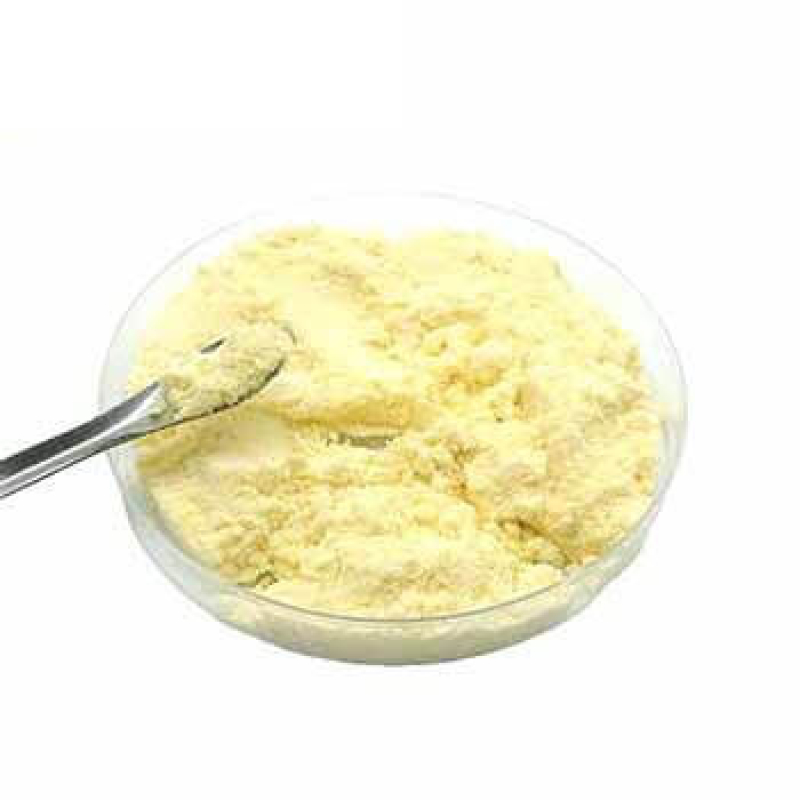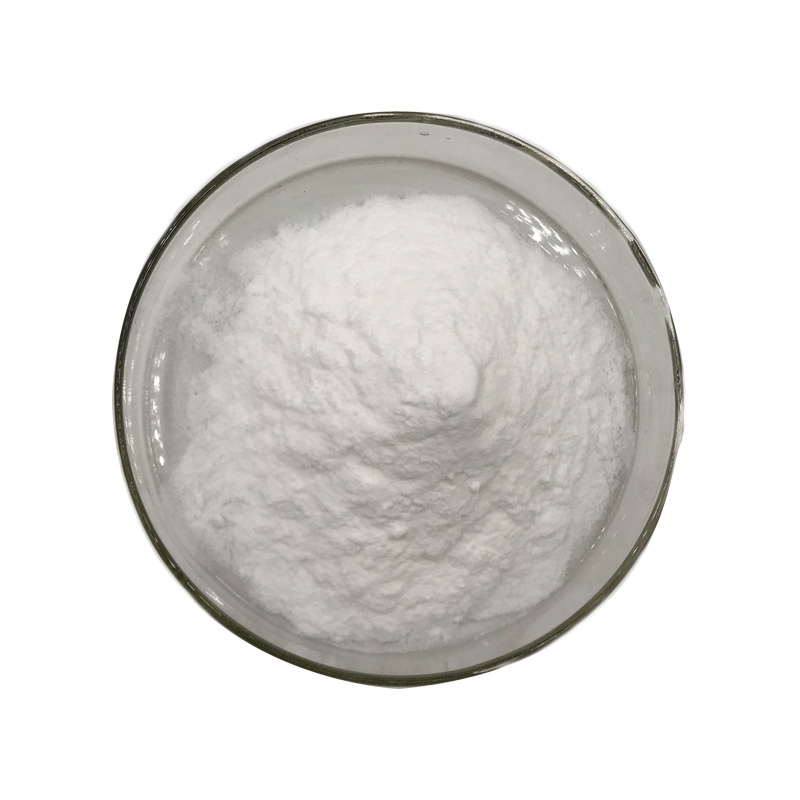Products Description of M-Phenylenediamine (m-PDA) CAS#108-45-2Meta-phenylenediamine is an important raw material for organic synthesis. It is mainly used as a dye intermediate to produce basic orange, basic brown G, direct sunfast black G and other dyes. It is also used as fur dye and epoxy resin. It is used as a curing agent, cement coagulant, mordant, color developer, etc.
Contact Now
Products Description of Flumethrin CAS#69770-45-2The industrial product is a clear brown liquid with a slight special odor. The specific density d is 1.013, and the vapor pressure is 1.33×10-8Pa (20°C). It is insoluble in water, but soluble in organic solvents such as methanol, acetone, and xylene.
Contact Now
Products Description of N,N-Diethyl-m-toluamide CAS#134-62-3DEET (diethylmethylbenzamide), also known as DEET, is a broad-spectrum insect repellent that repels a variety of biting insects in various environments, including stinging flies, midges, black flies, chiggers, deer flies, fleas, gnats, horse flies, mosquitoes, sand flies, small flies, stable flies and ticks. DEET was developed and patented by the U.S. Department of Agriculture during World War II. The product was designated as a mosquito repellent for use by the U.S. military in 1946.
Contact Now
Products Description of Titanium tetrachloride CAS#7550-45-0Titanium tetrachloride is the most important titanium halide and an important raw material for the production of titanium sponge and chloride-process titanium dioxide. Pure titanium tetrachloride is a colorless, transparent, high-density, non-conductive liquid with a chemical formula of TiCl4 and a relative density of 1.726. The melting point is -25°C and the boiling point is 136.4°C. It has a pungent sour taste and is easily hydrolyzed, generating white smoke in humid air. It dissolves in water and decomposes at the same time.
Contact Now
Products Description of Zinc bromide CAS#7699-45-8Zinc bromide is a chemical substance with the chemical formula ZnBr₂. It is a salt inorganic substance and is easily soluble in water.
Contact Now
Products Description of P-Phenylenediamine CAS#106-50-3 p-Phenylenediamine, also known as Urs D, is one of the simplest aromatic diamines. The pure product is white to light purple crystals, which turn purple or dark brown when exposed to air. It is slightly soluble in cold water, soluble in ethanol, ether, chloroform and benzene.It can be used to make azo dyes, high molecular polymers, fur dyes, rubber antioxidants and photo developers.
Contact Now
Products Description of Mix Xylene CAS#1330-20-7Xylene (dimethylbenzene) is a colorless, transparent, aromatic liquid. It is the product of two hydrogen atoms on the benzene ring being replaced by methyl atoms. It has a boiling point of 137-140°C. Xylene is divided into three isomers: o-xylene, m-xylene, and p-xylene according to the positions of the two methyl atoms. In industry, xylene refers to a mixture of the above isomers and ethylbenzene.
Contact Now
Products Description of N-ETHYLFORMAMIDE CAS#627-45-2Used for liquid crystal intermediates, LCD stripping agent raw materials, pharmaceutical intermediates, etc.N-ETHYLFORMAMIDE Chemical PropertiesMelting point -60.43°C (estimate)Boiling point 202-204 °Cdensity 0.950 g/mL at 20 °C(lit.)refractive index n20/D 1.432Fp 67°Cstorage temp. 2-8°Cform clear liquidpka16.49±0.23(Predicted)color Colorless to Light yellow to Light orangeBRN 1737860EPA Substance Registry SystemFormamide, N-ethyl- (627-45-2)Safety InformationSafety S
Contact Now
Products Description of 6-Fluoronicotinic acid CAS#403-45-26-Fluoronicotinic acid is a pyridine compound, which is often used as a pyridine intermediate and a pharmaceutical intermediate.
Contact Now
Potassium clavulanate CAS# 61177-45-5Product Overview:Potassium Clavulanate, also known as CLAVULANIC ACID POTASSIUM SALT with the CAS#61177-45-5, is a potent β-lactamase inhibitor that is revolutionizing the way we combat bacterial infections in the industrial pharmaceutical sector. As a key component in the synthesis of advanced antibiotics, our Cellulose Clavulanate is designed to meet the rigorous demands of modern manufacturing processes.Market Relevance:In the competitive landscape of the pharmaceutical industry, the need for effective antibacterial agents is paramount.
Contact Now
Methylcyclopentadienyl Manganese Tricarbonyl CAS# 12108-13-3Manganese, tricarbonyl methylcyclopentadienyl is a dark orange liquid. Faintly pleasant, herb-like odor. Molecular weight= 218.10;Boiling point=232℃; Freezing/Melting point=18℃; Flash point=74℃; 96℃. Hazard Identification (based on NFPA-704 M Rating System): Health 3, Flammability 0, Reactivity 0.
Contact Now
Products Description of Ammonium dihydrogen phosphate CAS#7722-76-1Diammonium phosphate is a highly effective fertilizer widely used in vegetables, fruits, rice and wheat.Ammonium dihydrogen phosphate Chemical PropertiesMelting point 190 °C (dec.) (lit.)Boiling point 87.4 °Cdensity 1.02 g/mL at 20 °Cvapor pressure 0.066 hPa (125 °C)RTECS TC6587000storage temp. Inert atmosphere,Room Temperaturesolubility H2O: 0.1 M at 20 °C, clear, colorlessform SolidSpecific Gravity1.803color White or colorlessPH Range3.8 - 4.4PH3.
Contact Now
Products Description of Phenol CAS#108-95-2Phenol, with the chemical formula 𝐶6𝐻5𝑂𝐻C6H6O, is a white crystalline substance known for its versatility and reactivity due to the hydroxyl group attached to the benzene ring. It serves as a key precursor in the synthesis of pharmaceuticals, including aspirin, and is integral to the production of resins, plastics, and synthetic fibers like nylon. Phenol's historical use as a disinfectant highlights its ability to denature proteins and disrupt cell membranes. It also plays a role in the detergent industry and analytical chemistry.
Contact Now
Products Description of N,N-Diethyl-p-phenylenediamine sulfate CAS#6283-63-2White or light red crystals. Soluble in water, slightly soluble in alcohol. Easily oxidized to pink.
Contact Now
Products Description of Bromobenzene CAS#108-86-1Bromobenzene is an organic compound with the chemical formula C6H5Br. It is a colorless oily liquid with the smell of benzene. Insoluble in water, soluble in most organic solvents such as methanol, ether, acetone, etc.
Contact Now
Products Description of Dehydroacetic acid CAS#520-45-6DHA is widely found in many deep-sea fish oils, as well as in marine algae and some terrestrial plants. DHA is an ω-3 type unsaturated fatty acid and an essential fatty acid for the body. mp44℃. It is very unstable to light, oxygen and heat, and is easily oxidized and cracked, so antioxidants should usually be added.
Contact Now
Products Description of Optical brightener OB-1 CAS#1533-45-5Fluorescent whitening agent OB-1, 2,2-(4,4-diphenylethylene) bisbenzoxazole, is a yellow crystalline substance with a melting point of 359-362℃, insoluble in water, odorless, stable performance, and a maximum absorption spectrum wavelength of 374nm. It has strong fluorescence and a fluorescence emission wavelength of 434nm.
Contact Now
Products Description of N,N-Di-Sec-Butyl-P-Phenylenediamine CAS#101-96-2N,N-di-sec-butyl-p-phenylenediamine is a brown-red liquid. It is an amine antioxidant with excellent properties. It is especially suitable for use as an additive for cracking or thermal cracking gasoline (gasoline with high olefin content). It can effectively prevent olefin oxidation. Produce gel.
Contact Now
Dodecyltrimethylammonium Bromide Chemical PropertiesMelting point 246 °C (dec.)(lit.)density 1.1566 (rough estimate)vapor pressure 0Pa at 20℃refractive index 1.5260 (estimate)Fp 246°Cstorage temp. Store below +30°C.solubility H2O: 0.1 M at 20 °C, clear, colorlessform Powdercolor White to slightly yellowWater Solubility solubleSensitive Hygroscopicλmaxλ: 240 nm Amax: ≤0.2λ: 250 nm Amax: ≤0.03λ: 260 nm Amax: ≤0.02λ: 500 nm Amax: ≤0.02BRN 3597463InChIKeyXJWSAJYUBXQQDR-UHFFFAOYSA-MCAS DataBase Reference1119-94-4(
Contact Now
Products Description of 4-Methyl-2-pentanone CAS#108-10-14-Methyl-2-pentanone (methyl isobutyl ketone) reagent is widely used as a solvent in chemical and pharmaceutical industries, separation and recovery of nuclear fission products, and scientific research experiments. The content of 4-methyl-2-pentanone sold on the market is ≤99%, and it contains a small amount of impurities such as alcohol, acidic substances and water. 4-Methyl-2-pentanone is used as a solvent for nitrocellulose, lacquer, and certain polymers and resins.
Contact Now
Methylcyclohexane CAS#108-87-2Methylcyclohexane, an alkene, is a colorless liquid with a faint benzene-like odor. The smell thre-shold is 630 ppm (this is above the OEL). Molecularweight = 98.21; Specific gravity (H2O:1)= 0.77; Boilingpoint = 101℃; Freezing/Melting point= - 127℃; Vaporpressure= 37 mmHg at 20℃; Flash point= - 3.9℃ (cc),- 5.9℃ (oc); Autoignition temperature = 258℃. Explosivelimits: LEL= 1.2%; UEL = 6.7%.
Contact Now
Methyl triphenyl phosphonium chloride Chemical PropertiesMelting point 221°C (dec.)Boiling point 332.65℃ at 101.3kPadensity 1.22 at 23℃vapor pressure 0.001Pa at 40℃storage temp. Inert atmosphere,Room Temperaturesolubility Soluble in methanol.form Solid:crystallinecolor White to Almost whiteSensitive HygroscopicLogP-1.73 at 20℃ and pH6.3-6.46Surface tension71.4mN/m at 1g/L and 20℃CAS DataBase Reference1031-15-8(CAS DataBase Reference)Safety InformationHazard Codes Xn;N,N,XnRisk Statements 21/22-38-41-51/53Safety Statements 22-26-36/37/
Contact Now
Paraffin, Liquid CAS#8012-95-1Mineral oil mist is a colorless, oily liquid aero-sol dispersed in air with an odor like burned lubricating oil.The odor threshold is 1.0 ppm. Specific gravity (H2O:1)=0.865 at 60℃; Boiling point = 250- 360*C; Vaporpressure = <0.5 mmHg at 20℃; Flash point= 193℃;Autoignition temperature = 260- 371℃. HazardIdentification (based on NFPA-704 M Rating System):Health 0, Flammability 1, Reactivity 0. Insoluble in water.Product Name:Paraffin, liquidSynonyms:PARAFFIN VISCID, EXTRA PURE, DAB, PH. EU R., B. P., PH.
Contact Now
Products Description of Melamine CAS#108-78-1Melamine, commonly known as "melamine", "protein essence" and "melamine (Pinyin: mì'àn)", is a triazine nitrogen-containing heterocyclic organic compound, often used as a chemical raw material. It is a white monoclinic crystal, almost odorless, slightly soluble in water (3.1g/L at room temperature), soluble in formaldehyde, acetic acid, hot ethylene glycol, glycerin, pyridine, etc., insoluble in acetone and ethers, harmful to the body, and cannot be used in food processing or food additives.
Contact Now


































